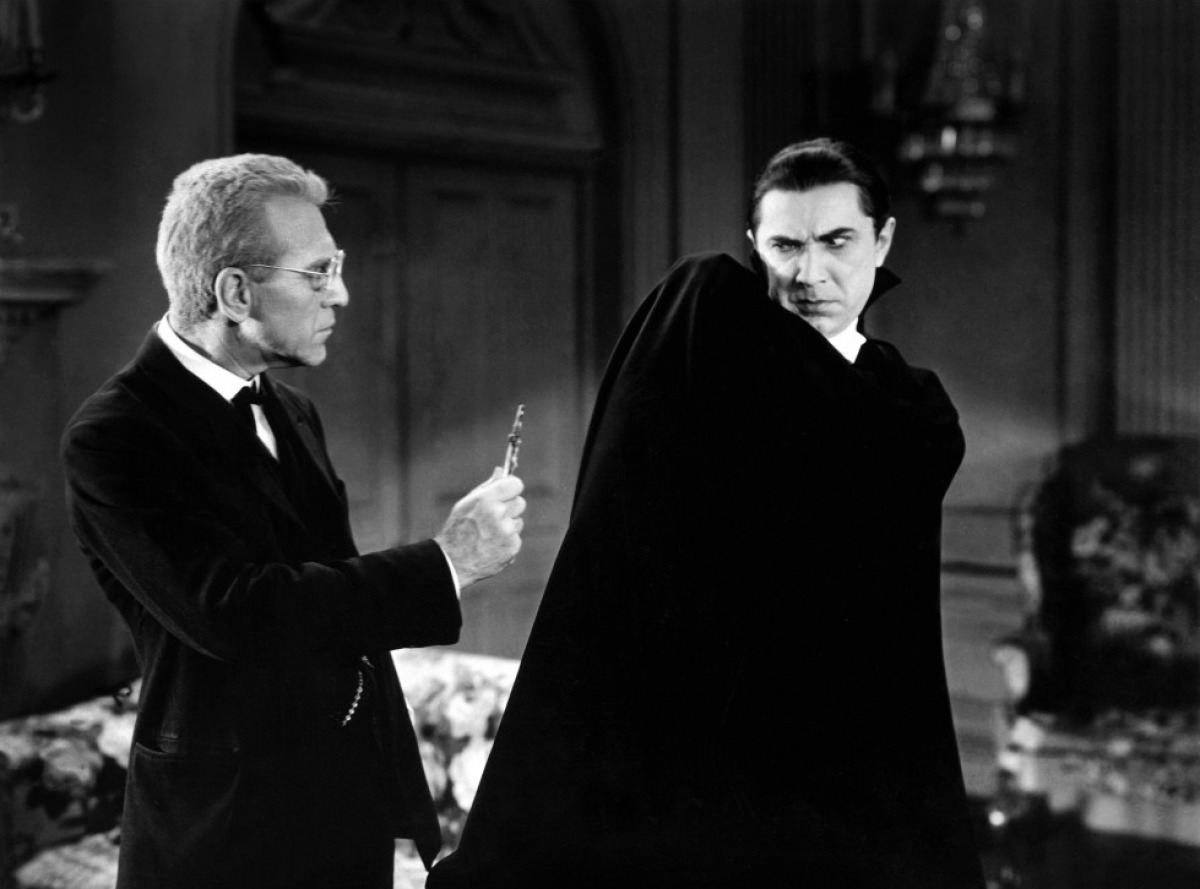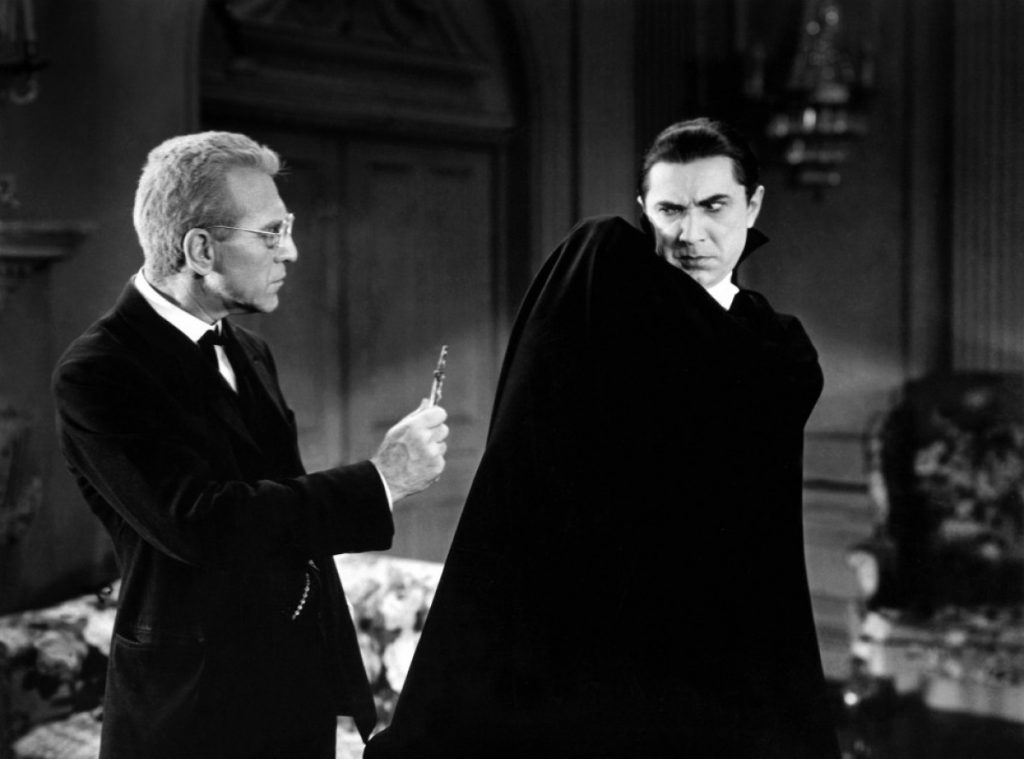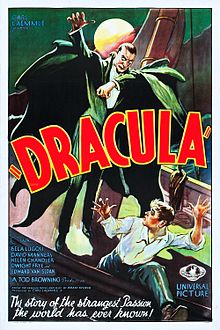Dracula (reviewed by Lisa Marie Bowman)
It pains me to say it but, of all the classic Universal monster films, Dracula is probably my least favorite.
I hate to say that because I love vampires and I love the story of Dracula. I have read the book several times, I’ve seen several productions of the stage play, and I’ve seen a countless number of Dracula films. (Christopher Lee’s version is my favorite.) The 1931 version of Dracula — while hardly being the first vampire movie — was still a very important moment in the history of horror cinema. Every vampire film that has come out since owes a debt of gratitude to Dracula. Bela Lugosi’s performance set the standard against which almost all vampires are judged.
I always want to love Dracula but … no, the film just doesn’t work for me.
Of course, we all know the film’s story. Dracula (Bela Lugosi) comes to England from Transylvania. He turns Lucy (Frances Dade) into a vampire and attempts to do the same thing to Mina Seward (Helen Chandler). Mina’s fiancée, John Harker (David Manners) and father, Dr. Seward (Herbert Bunston), attempt to stop him with the help of Prof. Van Helsing (Edward van Sloan). Renfield (Dwight Frye) serves as Dracula’s servant and eats bugs. Dracula tells us that he does not drink … wine. He talks about the music of the night. His eyes get wide at the sight of blood and he hides his face when confronted with a cross.
Of course, though Dracula may have first appeared in Bram Stoker’s novel, the film is actually an adaptation of a stage play that was based on the novel. That’s the main problem with Dracula as a movie. It’s a very stagey film, one that never seems to quite break free of its theatrical origins. It’s a rather slow-moving film, one that is full of awkward scene transitions and moments of dead air. One need only compare it to F.W. Murnau’s Nosferatu or Carl Theodor Dreyer’s Vampyr to see just how visually bland Dracula really is.
Dracula‘s blandness is especially surprising when you consider that the direction is credited to Tod Browning. Browning directed some of the best horror films of the silent era and, after the release of Dracula, he went on to direct the brilliant Freaks. Dracula doesn’t feel like a Browning film but perhaps that’s because it actually wasn’t. Reportedly, Tod Browning was struggling with depression during the filming of Dracula and was rarely on set. Instead, most of the film’s direction was handled by cinematographer Karl Freund. Freund had never directed a film before (though he would later acquit himself quite well with The Mummy) and Dracula‘s flaws were largely a result of that inexperience.
Well, that may be true or it may not. Here’s what we can say for sure: Bela Lugosi’s work as Dracula holds up surprisingly well. When seen today, it can be difficult to fairly judge Lugosi’s performance. We’ve seen so many parodies and bad imitations that it’s difficult to imagine the impact that it may have had on audiences in 1931. Lugosi was recreating his stage performance and it’s a very theatrical performance but, at the same time, Dracula is a character that doesn’t demand or require subtlety. There’s a power to Lugosi’s performance. Maybe it’s the piercing stare or the unbridled blood lust that seems to be reflected in his eyes. Maybe it’s the accent. Maybe it’s the haughty and arrogant way that he carries himself. Whatever it is, it works.
No, Dracula does not hold up as well as you might hope. But Bela Lugosi’s performance remains a classic.



